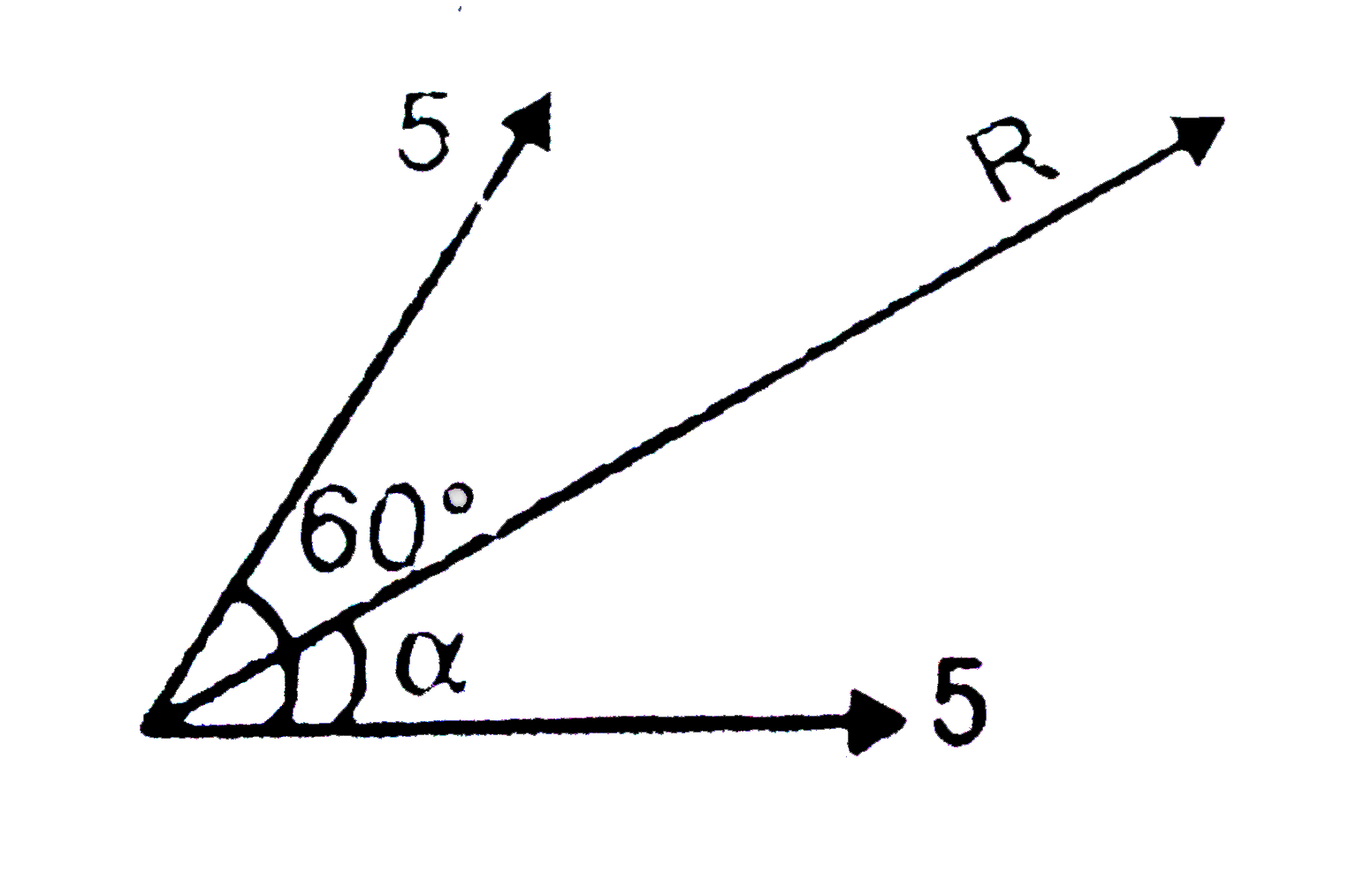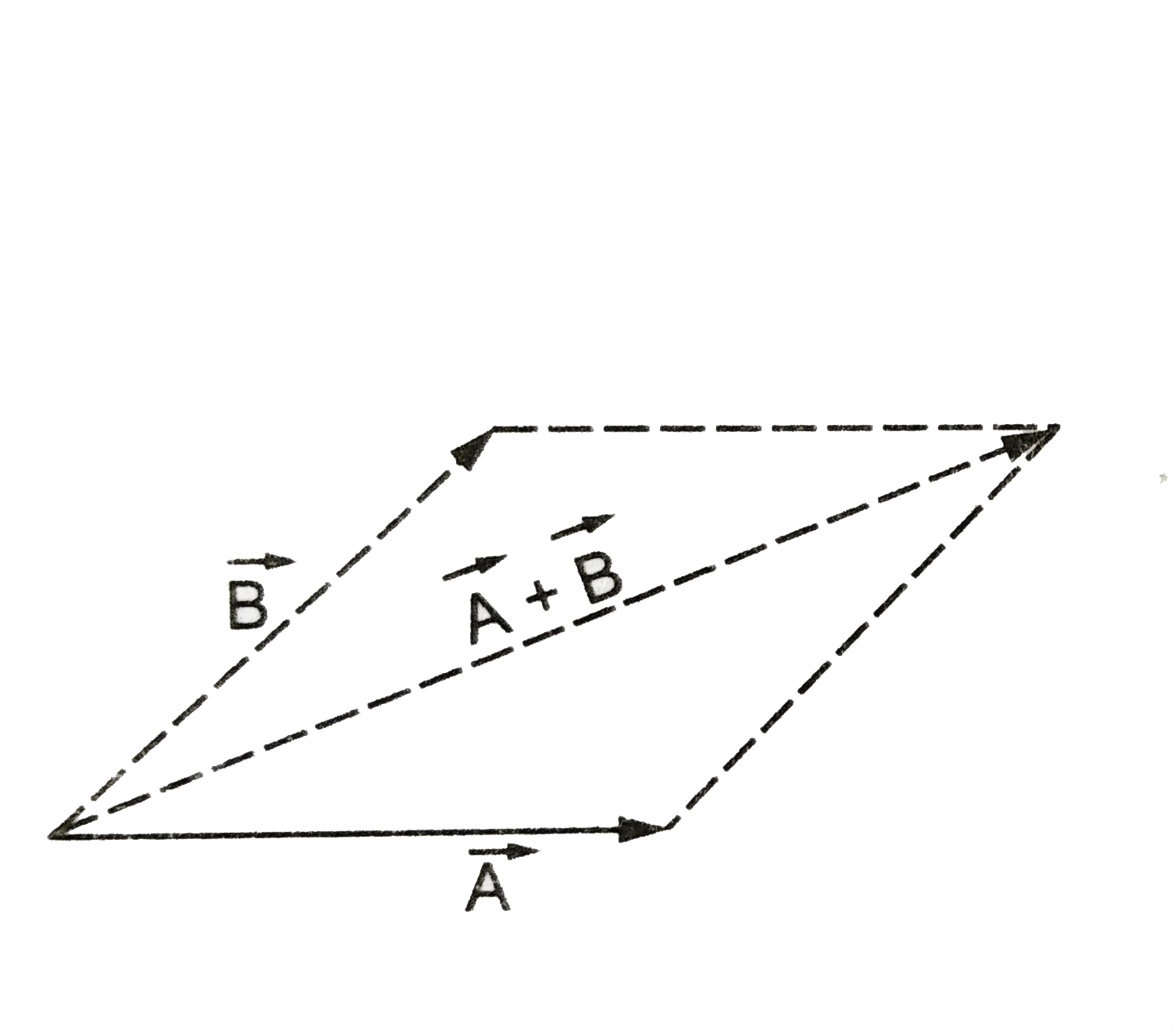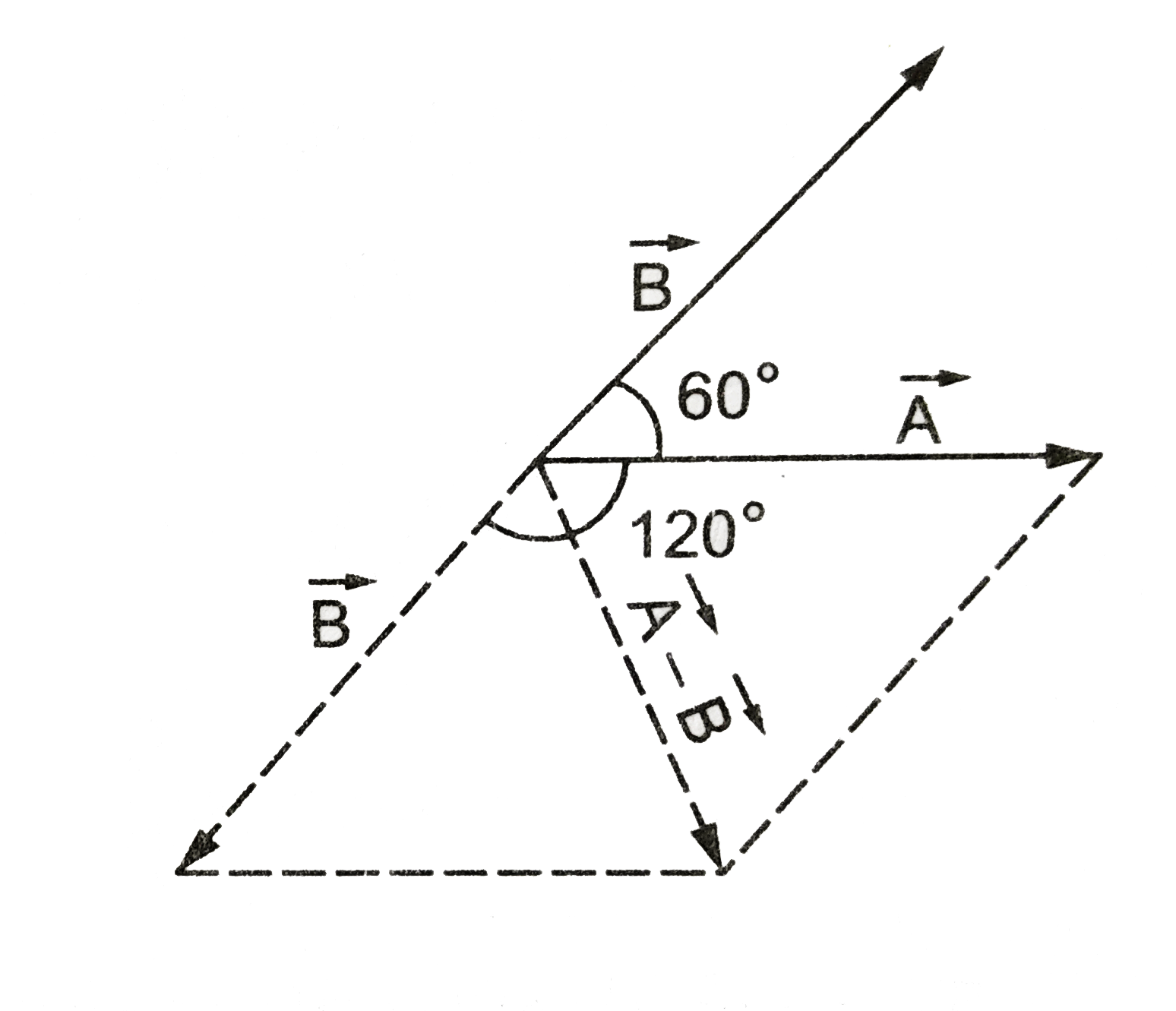Two vectors a and b have equal magnitudes of 12 units. These vectors are making angles 30°and 120° with the x axis respectively. Their sum is r . Find the x and y components of r .
(6√3−6),(6−6√3)
(6√3+6),(6+6√3)
(6√3−6),(6+6√3)
(6√3+6),(6−6√3)
The correct Answer is:A
To find the x and y components of the resultant vector r formed by the addition of two vectors a and b, we can follow these steps:
Step 1: Identify the vectors and their components
Given:
- Magnitude of both vectors |a|=|b|=12 units.
- Angle of vector a with the x-axis θa=30∘.
- Angle of vector b with the x-axis θb=120∘.
Step 2: Calculate the x and y components of vector a
The x and y components of vector a can be calculated using the following formulas:
- ax=|a|cos(θa)
- ay=|a|sin(θa)
Substituting the values:
- ax=12cos(30∘)=12⋅√32=6√3
- ay=12sin(30∘)=12⋅12=6
Thus, the components of vector a are:
a=6√3^i+6^j
Step 3: Calculate the x and y components of vector b
Similarly, for vector b:
- bx=|b|cos(θb)
- by=|b|sin(θb)
Substituting the values:
- bx=12cos(120∘)=12⋅(−12)=−6
- by=12sin(120∘)=12⋅√32=6√3
Thus, the components of vector b are:
b=−6^i+6√3^j
Step 4: Find the resultant vector r
The resultant vector r is the sum of vectors a and b:
r=a+b
Calculating the x and y components:
- rx=ax+bx=6√3−6
- ry=ay+by=6+6√3
Thus, the resultant vector r can be expressed as:
r=(6√3−6)^i+(6+6√3)^j
Step 5: Final Result
The x and y components of the resultant vector r are:
- rx=6√3−6
- ry=6+6√3
Given:
- Magnitude of both vectors |a|=|b|=12 units.
- Angle of vector a with the x-axis θa=30∘.
- Angle of vector b with the x-axis θb=120∘.
The x and y components of vector a can be calculated using the following formulas:
- ax=|a|cos(θa)
- ay=|a|sin(θa)
- ax=12cos(30∘)=12⋅√32=6√3
- ay=12sin(30∘)=12⋅12=6
a=6√3^i+6^j
Similarly, for vector b:
- bx=|b|cos(θb)
- by=|b|sin(θb)
- bx=12cos(120∘)=12⋅(−12)=−6
- by=12sin(120∘)=12⋅√32=6√3
b=−6^i+6√3^j
The resultant vector r is the sum of vectors a and b:
r=a+b
- rx=ax+bx=6√3−6
- ry=ay+by=6+6√3
r=(6√3−6)^i+(6+6√3)^j
The x and y components of the resultant vector r are:
- rx=6√3−6
- ry=6+6√3
Similar Questions
Two vector A and B have equal magnitudes. Then the vector A+B is perpendicular to
View SolutionFind a vector →r of magnitude 3√2 units which makes an angle of π4 and π2 with y and z-axis respectively.
View SolutionFind a vector →r of magnitude 3√2units which makes an angle of π4 and π2 with y and z−axis respectively.
View SolutionWrite down a unit vector in XY-plane, making an angle of 30° with the positive direction of x-axis.
View SolutionWrite down a unit vector in XY-plane, making an angle of 30° with the positive direction of x-axis.
View SolutionAdd vectors →A,→Band→C each having magnitude of 100 unit and inclined to the X-axis at angles 45∘,135∘and315∘ respectively.
View SolutionTwo vectors having equal magnitude of 5 units, have an angle of 60∘ between them. Find the magnitude of their resultant vector and its angle from one of the vectors.
 View Solution
View SolutionWrite down a unit vector in XY plane, making an angle of 30∘ with positive direction of x-axis.
View SolutionTwo vectors of equal magnitude of 5 unit have an angle 600 between them. Find the magnitude of (a) the sum of the vectors and (b) the difference of the vectors.
 .
.  .View Solution
.View SolutionLet →Aand→B be the two vectors of magnitude 10 unit each. If they are inclined to the X-axis at angles 30∘and60∘ respectively, find the resultant.
View Solution

